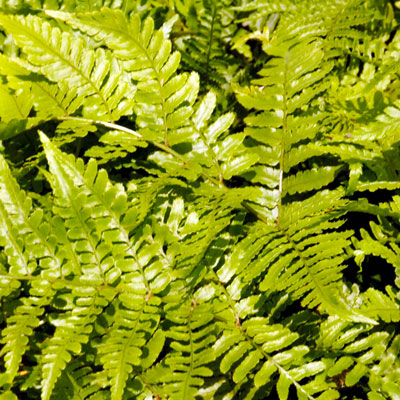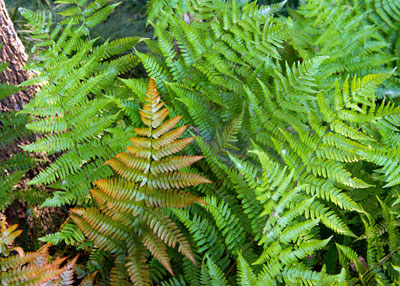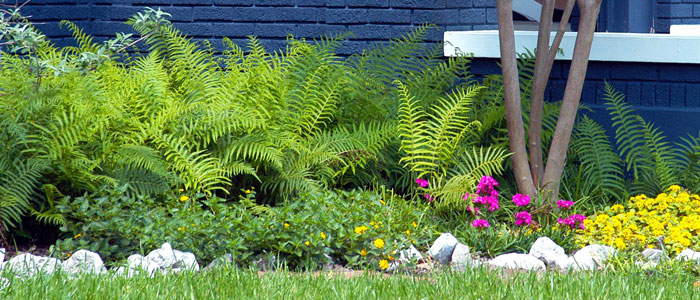Big Fan of Ferns
As I sat down to write this little piece, I Googled the question, “What state has the most native species of ferns.”

The answer came back as “Texas.” Bet you didn’t know that!
How many native species would you guess?
127. Wow! And where would you expect 59 percent of them to be found growing natively?
Where are all those ferns native in Texas? “East Texas Piney Woods,” did you say? Nope. The Texas Hill Country where there are 75 species growing out of the seeps and streams flowing out of the rocks.
I spent several summers working with my dad across the south and north sides of hills between Uvalde and Camp Wood as he tested herbicides on poisonous range plants for Texas A&M. He pointed out all the ferns that were growing in the site-specific little micro-environments on those north-facing hillsides.
And so now, why we really called this meeting…
Several years ago my buddy Tucker Reed gave Lynn and me a nice tour when he was still out at the Dallas Arboretum. That’s where I met Autumn fern, variety ‘Brilliance.’
I’d been growing regular Autumn fern for 40 years by that time. I’d found it tucked away in the back of a nursery. It looked pretty, and I had a little spot that matched up with it. It was happy there, and I was happy with it.
But the planting of Brilliance at DABS was stunning. New fronds came out a bright bronzy-orange, setting them off beautifully against the dark green mature fronds.
I set out the next week to find some of my own, and I came home with a dozen. They’ve done very well, and I’m pleased to recommend them to you.
Autumn fern facts…
Here’s what I can share from my decades of experience growing these plants.
• Botanically it’s Dryopteris erythrosora;
• Grows to 12-16 in. tall and 15 in. wide;
• Deep green fronds;
• New growth may come to the party dressed in a bright bronzy cast, especially just before winter;
• Rarely, if ever, crops up with insects or diseases. (Don’t mistake the reproductive spores that are produced on the bottoms of the leaves for insects. They’re completely normal.)

Autumn fern needs…
• Shade (or minimal early morning sun);
• Highly organic planting soil;
• Moist soils at all times – perfect drainage, but never dry.
Local independent retail garden centers usually have autumn ferns in the spring, and many will still have them now.
You can also find several improved selections online simply by searching key words “Buy Dryopteris erythrosora.”


